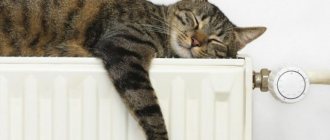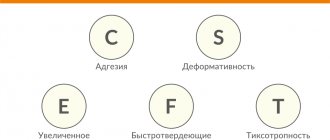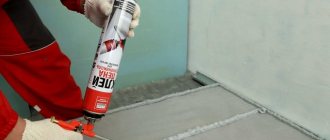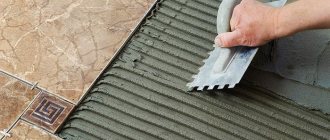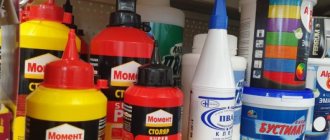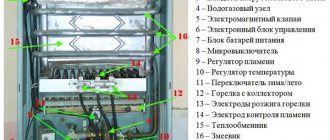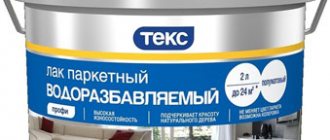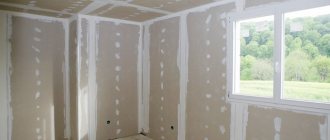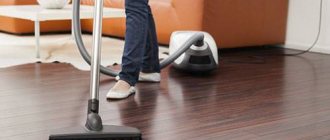Types of glass glue
Glass adhesive is made from different components. Therefore, several types of compositions are distinguished.
Cyanoacrylate
The use of cyanoacrylate type ensures reliable fixation. The glued planes can be easily subjected to loads and vibrations. This composition has its positive aspects:
- Fast setting.
- Long service life of the glued seam.
- Can be applied to glass surfaces with pre-painting.
Work using this type is carried out quickly and efficiently. An example is the connection of elements in optics, microcircuits, wiring harnesses, etc.
The disadvantage is that the work must be carried out quickly, with maximum accuracy. There is practically no time to correct inaccuracies or defects. Also, the glue does not withstand constant contact with water.
An example of such a composition is Kleber CA cyanoacrylate adhesive. Designed for a wide range of materials. Treated with a professional quick-hardening compound. Dries in 5 seconds. Forms a colorless, heat-resistant seam.
Silicone
Silicone glue can also glue glass. Made on the basis of a high-molecular polymer, contains additives in the form of rubber, solvent, and hardener. Resistant to chemical and biological influences. There are formulations that include antiseptic components that prevent the spread of fungal formations
This is especially important if the glass product is located in wet areas (bathroom, swimming pool, etc.). Also, water does not penetrate into the seam, but collects in drops on the surface
After complete hardening on the plane with the applied glue, a film is formed that does not oxidize and is not susceptible to exposure to solar radiation. Silicone does not contain toxic compounds, therefore it is safe for the body. It is even used in the food industry.
Its viscosity is creamy. Drying time depends on the conditions created.
Example B-7000 is a multi-purpose composition for gluing various materials, including glass. Ease of use is ensured by a special tip that regulates the flow of mass. When the seam is heated to 100 degrees, it is freed from glue. Most often used when replacing gadget screens.
Polyurethane
It is easy to glue glass with a polyurethane compound, since the mixture is designed for gluing smooth surfaces. Available in two types:
- One-component - the mass is ready for use.
- Two-component - requires mixing with a hardener, which determines flexibility during drying.
The adhesive includes composites to improve bond strength. Also included are resins and other active substances. They affect the viscosity of the material.
Example Soudal 47A - one-component. Designed for gluing glass and mirror parts indoors. Contains rubber in the base.
Silicate
Silicate or liquid glass - transparent glass glue. The composition contains substances used in the manufacture of glass material. Easy to use, fireproof.
The disadvantage is the speed of drying; the coatings cannot be further painted.
Heat-resistant glass adhesive
Heat-resistant adhesive of two types:
- Natural base - silicate, fireclay fibers, purified sand, min substances. The coating can withstand heating up to 1200 degrees, without releasing harmful components into the air, so the mass is safe for the body. Can be used for household repairs (oven screen).
- The synthetic base is inorganic compounds, including phosphates, which can withstand temperatures up to 3000 degrees. It is not affected by acids and is used for gluing glass used in wet areas.
TM Titan produces a temperature-controlled silicone composition that firmly glues glass surfaces and withstands elevated temperatures.
UV glue for glass
Ultraviolet rays are involved in the polymerization process of this type of glue. The compositions are used for gluing glass surfaces made of natural and organic glass with different planes and to each other. The base is methacrylic acid.
Provides effective connection, heat resistance (range -40 - +150 degrees), water resistance, resistance to mechanical stress. The mass has no tone, transparency remains when completely dry. The composition does not include solvents, therefore it is safe for the body.
There are different masses with different viscosities. For example:
- K-58ES – ultra-low viscosity (40cps).
- K-55ES – low viscosity (60cps).
- K-22V – high viscosity (390cps).
Manufacturers of high temperature sealants
Heat-resistant sealants are available in the range of most major brands:
- Soudal Gasket Seal is a high temperature silicone sealant that remains flexible after curing. Properties are maintained up to +285 degrees. It is oil and petrol resistant, not afraid of water and antifreeze. Used in industry and construction, for boilers and kitchen equipment, as an automotive gasket, to form O-rings in engines and pumps.
- Penosil 1500 is a heat-resistant high-temperature sealant that can withstand up to +1500 degrees. The base is sodium silicate. It is suitable for stoves, fireplaces, chimneys, central heating boilers, installation and repair of other stove equipment. Soudal also has similar material.
- Red heat-resistant sealant Tytan is an acidic high-temperature sealant for arranging joints. The operating range is from -65 to +260 degrees. Temporarily the mass can withstand up to +315 degrees. The first film sets on the surface within 15 minutes.
- Abro Red is a red high temperature gasket sealant for cars. It comes in small, convenient 85 g tubes with a removable nozzle. Operating mode: up to +343 degrees. The thin nozzle allows you to form a gasket up to 6 mm. Oil-resistant material withstands compression, shear and tension.
- “Moment Germent” is a silicone heat-resistant adhesive-sealant for high temperatures, up to +315 degrees. It is UV and ozone resistant. Adheses well even to weak and porous substrates. Used in pumps, motors, furnaces, chimneys. Suitable for connecting heating elements made of metal. The color is red-brown.
- Permatex high-temperature anaerobic flange sealant is needed for rigid connections at temperatures up to +204 degrees. It is suitable for tight-fitting seams up to 0.5 mm. When applied, it does not cause corrosion and does not require tightening of fasteners.
- Loctite 5972 is a one-component, high temperature thread sealant available in dark gray or black. The viscous paste does not harden completely and is therefore suitable for compaction. Among the advantages is high adhesion to paper, metal, plastic, and cork. It is used for gearboxes, pipelines, manifolds, heating systems.
- DoneDeal DD6785 is a heat resistant compound for exhaust systems, muffler and exhaust manifold. Contains sodium silicate, clay, synthetic fibers and steel powder. It can withstand up to +1400 degrees and hardens within 3 hours. In particular, it eliminates the emission of combustion products and exhaust gases from cracks and damage to mufflers.
- Victor Reinz is an automotive high-temperature sealant without solvents. It is available in two variations: transparent for the range from -50 to +200 degrees and gray for +300. There are no acids in the composition, so it can be used with plastic, plastic, aluminum, electrical components.
- High-temperature acrylic sealant "Ogneza" is used in the construction of fire safety systems. It is classified as fire retardant. Maximum temperature - up to +1300 degrees. Fire resistance - 2 hours. Such heat-resistant sealants are used for installing cable penetrations.
- Dow Corning Q3-1566 is a sealing adhesive for oven, range and other heating equipment. Suitable for home and industrial furnaces, boilers, heaters, ceramic punches, oil pans, chemical plants.
There are also solutions for the reverse problem. These are frost-resistant sealants that allow you to work at -30 degrees and even lower. Basically, they are needed for outdoor work in harsh climatic regions.
Instructions for use for tile adhesive
Such compositions are also quite easy to use. Heat-resistant reinforced adhesive of this type, supplied to the market in the form of a dry mass, is mixed with water, according to the instructions from the manufacturer. In some cases, a little water needs to be added to paste-like products of this group (if they dried out during storage). It is best to mix compositions of this variety using a drill. The finished mass should be as homogeneous as possible. Before use, solutions are usually kept for 10-15 minutes. until swelling. Then they are mixed again.
At the same time, as in the case of clay heat-resistant mixtures, small portions of such glue are prepared. Heat-resistant tile compounds set quite quickly after adding water. In any case, the prepared portion will need to be used within a maximum of 30 minutes.
Before applying heat-resistant glue, the surface of the stove or fireplace is thoroughly cleaned of dust, old plaster, etc. Next:
- apply glue to the tile over its entire surface using a spatula;
- keep the tiles in a horizontal position for 2-3 minutes;
- press the finishing material to the surface of the oven and hold it in this position for several seconds.
If the tile used for finishing is large, it is recommended to apply glue not only to it, but also to the surface of the stove itself. These are the instructions for use that are provided, for example, for the heat-resistant reinforced adhesive “Terracotta”.
The work order is as follows
- Use a trowel to collect the required amount of glue and transfer it to a notched trowel.
- Apply a layer of heat-resistant glue up to 10 mm thick to the base
- lay tiles or bricks
- press the materials tightly for 2-5 minutes
- leave for 48 hours
- After this time, you can grind the seams
Adhesives containing epoxy resin can have a negative effect on the human body during operation. Therefore, you should always use a respirator, gloves and goggles.
If the product gets on your skin, carefully but gently remove it with a napkin and wash your hands with warm water and soap.
After hardening, the product is completely safe.
How to work with fireproof glue?
Before work, the mounted surfaces must be well cleaned of dust and dirt particles, because the adhesive solution interacts well only with perfectly clean and smooth surfaces. If the plane has irregularities or recesses that exceed 5 millimeters, then approximately a day before installation, they must be compared using the same solution. It is worth noting that all bases must be primed twice (it is advisable that the primer has a deep penetration effect).
To dilute the adhesive base, you need to read the instructions on the label; there should be clear proportions of dry ingredients and water. There is no clear proportion applicable to all solutions, because each manufacturer markets a unique product that has its own dilution proportions.
The dry mixture begins to be kneaded mechanically, gradually adding clean water to it, the solution must be stirred to such an extent that a homogeneous mass without lumps is obtained, after which it must be left for 5 minutes and mixed again. The resulting solution is ready for use, and it must be applied in a thin layer (no more than 1 mm) onto a previously prepared surface; for this it is recommended to use notched spatulas of suitable sizes, and the size of the teeth should not exceed 10 millimeters.
It is worth noting that when applying, it is necessary to take into account that such an amount of mixture must be applied to the surface so that the tile can be attached in the next 30 minutes, otherwise it will dry out and become unusable. Fireproof tile adhesive has properties that allow you to fix the tile firmly, but if there are any shortcomings, the position of the tile can be corrected within 15 minutes. After two days have passed, the surface is ready for use, but before that it will be necessary to caulk the seams.
Advice from the experts: it is worth noting that in addition to the proportions, the label also specifies the conditions under which it is necessary to use the glue, so normal conditions are a temperature not exceeding 20 degrees with a relative humidity of 60%. If weather conditions are not favorable, that is, the temperature exceeds 20 degrees and direct sunlight falls on the mounted surface, then the time for using the solution can be significantly reduced. If the temperature is lowered, the setting time of the solution increases.
If the instructions are not followed, even experts will not be able to accurately predict what quality of cladding will be obtained at the end of the repair, and whether the tile will hold up. You may need to clean the surface and repeat the procedure again. This will entail not only additional forces, but also financial investments.
Heating can only be turned on after two weeks have passed from the moment the joints are jointed.
When working with glue, you should never forget about safety precautions, since the adhesive solution contains cement, so when diluted with water, an alkali is formed, which means that you need to wear protective gloves when working with it (gloves made from rubber) and safety glasses. The solution should not be allowed to get into the eyes or onto exposed skin; if this happens, the affected area should be thoroughly rinsed with water.
Expansion tank calculation
First, let's clarify the information a little: open-type expansion tanks (atmospheric) can also be installed on systems with forced circulation, this is the choice of the homeowner
We focused our attention on this, since it is unlikely that it will be possible to make a closed-type membrane tank at home, but an open one is no problem
But first you need to understand what dimensions it will have, and to do this, carry out the appropriate calculation. Without going into the jungle of formulas, we will use the old proven method of determining the capacity of the tank. Knowing that when heated from 20 ºС to 80 ºС, water adds approximately 4-5% in volume, let’s calculate the amount of water in the system. In this case, you should take into account:
- volume of the boiler tank - according to the manufacturer’s technical documentation;
- capacity of radiators - according to the product passport;
- the amount of coolant in the pipes.
Calculating the volume of water in pipes is quite simple. The lengths of all mains and connections are measured, distributed by diameter. Then the cross-sectional area of the pipe of each diameter is calculated and multiplied by its length. All results are added up and the total amount of water is obtained, to which the volume of coolant in the boiler and batteries is added.
Taking 5% of the total quantity and adding another 5% of the reserve, we determine that open-type expansion tanks should accommodate a tenth of what is in the system. Well, knowing the volume, it is not difficult to determine the size of the container.
Requirements for adhesive mixtures for finishing stoves
Tile adhesives used for tiling bases not exposed to high temperatures are not suitable for laying ceramics on stoves and fireplaces.
The action of high temperatures causes physical and chemical changes in x, therefore, for finishing stoves with tiles, special adhesive mixtures with the following characteristics are used:
Heat resistance
Resistance to high temperatures is indicated on the packaging of the adhesive, but you should know that the adhesive for underfloor heating is also considered heat-resistant, but is not suitable for finishing fireplaces, since the upper limit of its operating temperature is 50 degrees, which allows it to be used only for finishing chimneys .
The packaging must be marked “heat resistant”
The packaging of the consistency must indicate its suitability specifically for lining stoves and fireplaces, that is, it must withstand long-term temperatures of + degrees and short-term heating to + degrees.
High degree of adhesion
For cladding stoves, ceramics with the highest density and low porosity are used (majolica, porcelain stoneware, clinker, fireclay tiles), and the thickness of the heat-resistant tiles must be at least 8 mm.
Strong fixation of such cladding on the base requires the use of adhesives of the highest degree of adhesion.
Elasticity
Exposure to high (up to degrees) temperatures causes thermal expansion of the furnace masonry and heat-resistant cladding, but the magnitudes of the linear configurations of these in can be different. Therefore, heat-resistant tile adhesives must have sufficient elasticity after curing to neutralize the difference in the thermal expansion values of the body and the clay shell.
Safety and environmental friendliness
Under the influence of high temperatures, almost all or their components are destroyed, evaporate, releasing toxic substances into the environment.
Tile adhesive is fire-resistant, sets extremely quickly, which allows you to significantly reduce the service life
After curing, refractory compositions should not have harmful gas or dust emissions.
What kind of glass are pans made from?
For the production of pans, heat-resistant Pyrex glass is used, which can withstand heating up to 300-400 degrees and slight temperature changes. This cookware is suitable for cooking in the oven, microwave and on stove burners.
The secret of heat resistance is in the chemical composition of the material and its thickness. The more refractory compounds there are, the lower the expansion coefficient. The thicker the glass, the higher its resistance to high temperatures and overall strength.
However, in stores you can buy not only thick, but also thin glass pans. Thin-walled heat-resistant pans can withstand temperatures up to 300 degrees. They are suitable for the stove and oven, but are less durable and require a more careful approach. They also have a lower heat capacity, which is bad for stewing and baking.
Pots made of smoky or brown glass are no different in properties from transparent ones. It's just a matter of taste. Transparent glass is sometimes decorated with designs that are wash and heat resistant. Decor makes the dishes more interesting and beautiful.
Don't look for tempered glass pans on sale - there aren't any. Tempered glass is produced by rapidly heating to 600 degrees and instantly cooling. This material is used in the production of glasses, shot glasses, decanters and other utensils that are not subject to heat treatment. You can put tempered glass salad bowls in the microwave, but not in the oven. Hardening is needed only for greater strength; it does not increase heat resistance.
The most heat-resistant glass, which can withstand temperatures up to 1000 degrees, is not used in the production of pans. This occurs in ovens, fireplaces, stoves. But progress does not stand still. Perhaps soon there will be glassware suitable for use on gas stoves without a divider.
We should also highlight glass ceramics - it is a durable, opaque material with a smooth surface. Glass ceramics are used to make pots, roasting pans, baking dishes and jugs. In appearance, such dishes are similar to earthenware and porcelain tableware, but are suitable for the oven and stovetop.
Peculiarities
The first and main advantage is that it is a good alternative to welding. At the same time, it provides almost identical grip in terms of strength. If you use a chemical product instead of the usual method, you can save money. No additional equipment is required. But if we compare it in terms of strength, then before welding this indicator is slightly inferior. A specific liquid substance is different from the rest. The surface hardening process occurs only when heated.
The composition is in demand in household and construction chemicals. It is also often used in car repair and plumbing. If you choose the right product, you can combine any products.
Criterias of choice
When choosing an adhesive, you must pay attention to the compatibility of the composition with the metal being bonded. The strength of the formed layer should not be less than the strength of the metal itself
Along with the maximum temperature at which a particular composition can be used, the lower permissible thermal limit should also be taken into account. This will prevent the possibility of cracking and deformation of the seam at low temperatures.
When choosing the form of glue release, you need to take into account the place of application and type of work. When gluing microcracks, it is more convenient to use a product with a liquid consistency, and plastic sticks will be indispensable in cases where it is not possible to mix epoxy resins and hardener. The most convenient to use are ready-made semi-liquid mixtures, which do not require independent preparation and are completely ready for use. You should not buy glue for future use: the shelf life of many compounds does not exceed one year.
It should be remembered that even the strongest metal adhesive cannot match the adhesion strength of surfaces with traditional welding. If the structure is subjected to regular dynamic influences, the integrity of the joining seam will be at risk. In such cases, it is better to use welding or mechanical fasteners. If the glued part will be used at home, then there is no need to purchase expensive products with a high thermal threshold, used in the aviation and automotive industries. In this case, you can get by with a budget composition with an upper thermal limit of 120 degrees.
In the next video you will find a review of HOSCH two-component adhesive.
Silicone sealants
Liquid silicone rubbers, commonly known as silicone sealants, are one-component or two-component substances for the most effective protection of seams, cracks and joints.
Compared to other types of sealants, silicone ones have a number of advantages:
- Resistance to moisture, heat, cold (from -50 to +200 °C)
- Good adhesion to various materials
- Resistance to chemical influences (cleaning agents)
- Can be applied to surfaces of any temperature (cold or hot)
- The presence of antifungal additives in the composition
- Elasticity necessary to fix moving elements
- Smooth shiny surface after drying, formation of unnoticeable seams
Depending on the composition and main active ingredients, silicone sealants are divided into acetic (acidic) and neutral. Separately, there are sanitary sealants that are ideal for sealing seams and waterproofing in residential bathrooms, as well as for fixing moving parts in them.
When choosing silicone sealant, you need to pay attention to the following:
- Expiration date: it must be in order, otherwise the quality of the sealant may not be as expected
- Packaging: must not be damaged, as even the slightest crack can cause the sealant to dry out
- Company: you should choose sealants from proven brands with a good reputation.
- Place of purchase: it should be a specialized hardware store, not a stall or market
Surface treatment
If we talk about the gluing mechanism itself, it is mainly determined by the composition. Certain compositions are supposed to be applied to the entire surface, others - only by a spot method
Working with metal
When fastening metal elements, several methods are used: gluing, welding or mechanical connection. Gluing requires adherence to a special technique, which consists of a point impact on the target surface. For such work, it is recommended to use heat-resistant glue for metal 300 degrees.
As a rule, to work with metal elements, a special epoxy thermal composition with synthetic plasticizers and additives is used.
High-quality high-temperature metal adhesive can withstand temperatures of about 370 degrees. This determines its widespread use in the installation of heated floors. Hot-melt adhesive is often used in finishing works of saunas, fireplaces, stoves, etc.
Glass bonding
Today people value not only practicality, but also place increased demands on the aesthetic component. This is why, for example, household appliances are often made using various glass elements. Over time, such components may require adjustments. This group includes devices with a high degree of heating.
When operating under elevated temperature conditions, various violations of the integrity of components may occur. Heat-resistant adhesive for glass with organic compounds allows you to easily, quickly and reliably solve such problems without compromising the transparency of the surface.
Oven adhesive
Until recently, clay was the main material for facing hot surfaces. But clay is a rather dirty and labor-intensive material to work with. There are 2 types of adhesives suitable for ovens. These are heat-resistant sealants and adhesives. Both options will allow you to reliably adhere: bricks to each other (hot-melt adhesives) and bricks with different materials (sealants).
Heat-resistant adhesive for ceramics contains a special mixture of cement and sand with the addition of synthetic components. This increases the plasticity and adhesive properties of such bases.
In addition, the thermosealant is highly ductile and protects against deformation that occurs when heated.
When choosing glue when building fireplaces or stoves, you should pay attention to the toxicity of the components. As this parameter decreases, the amount of substances harmful to health released when exposed to high temperatures also decreases.
Vinyl siding colors
To make it easier to choose colors, they were divided into subgroups: shades of white, colored and pastel tones. The latter are the most popular because they are cheaper and do not become boring over time. The low price is due to the small amount of additives needed to maintain color intensity for a long time and prevent it from fading.
White and bright colored panels are most often used to design decorative elements and edgings. They will highlight the main pastel shade.
Basement siding is an exception. Models with imitation brick and natural materials are used here. They can have beige, gray, sand or terracotta shades. It is better to combine them with wall panels of natural colors so that the exterior of the house is logical and complete.
However, sometimes there are original solutions, for example, when the facade is completely covered with siding with imitation brick.
If you decide to purchase a block house, pay attention to natural motifs: pistachio, cream, B and banana. Panels of this color should be combined with the roof of the house - if it is a similar shade, then the building will look faded
How to combine colors correctly
In order not to make a mistake, you need to know the basic laws of color combinations. The win-win options here would be
beige and brown shades,
- sand and plum,
- cream and terracotta,
- pale yellow and burgundy.
If you're feeling confident, you can experiment with bolder combinations like tones of orange, purple and blue. Do not treat these recommendations as an immutable truth - the color scheme should, first of all, please you.
How to choose heat-resistant adhesive for fireplace and stove?
Fireplace
The hearth heats up to low temperatures, especially if used infrequently. But the furnace design during constant operation requires compositions that can operate under constant heating.
Accordingly, the type of heat-resistant adhesive is selected depending on the operating conditions.
- For cladding a fireplace, heat-resistant adhesive mixtures are sufficient. The outer surface of the hearth does not heat up enough to require more heat-resistant options. They use both cement-based compositions with polymer additives, like Cerezit, and special synthetic mixtures.
- For oven cladding, a composition of the same category, but more durable, is most often used. The structure not only heats up more, but also lasts longer: one load of firewood is enough for a day of work. Accordingly, all this time the cladding must accumulate heat and release it into the room. Heat-resistant tile adhesive must withstand constant heat, that is, be heat-resistant.
- Laying a stove structure, in particular a firebox, requires the use of much more serious adhesives
mixtures. Constant heating up to +1000 C allows the use of only heat-resistant fire-resistant mixtures. But using the same composition for laying tiles is not economically profitable.
- Another application of heat-resistant adhesive is electric ovens and gas ovens. A rather fragile part of them is glass, or, more precisely, the junction of glass and metal. Despite the oven’s heating temperature not being too high – an absolute maximum of 240 C – the sealant at the joint evaporates over time. To update it, you need heat-resistant glue - Moment, for example. Can be used on glass and any heat resistant sealant for higher reliability.
Extra options
In addition to resistance to heat, adhesives for tiling or bricklaying must meet some other characteristics:
coefficient of thermal expansion - under the influence of temperature, the volume of the material increases. If the coefficients of the adhesive solution and the material are very different, the connection will quickly fail. Complete coincidence of indicators is impossible, but it is possible to achieve sufficient elasticity of the seam; solution viscosity – adhesive properties. A mixture that is too high will not hold the tiles on the surface. If the viscosity is too low, the tile slides along the vertical surface; gas tightness - combustion products should not enter the room, which means the resulting seam should have high performance; The composition for dishes must differ in special parameters
It is important that the glue is not only heat-resistant, but also food inert. Mixtures for food plastic containers are selected especially carefully.
Application of heat-resistant glue
In everyday life and industrial work, there is often a need to use a special one for installation that would be characterized by resistance to various types of external and natural actions. The main such means is considered to be heat-resistant glue, due to its chemical and physical properties, it is actively used during installation work on installing heated floors, finishing steam rooms, fireplaces, baths, saunas, and stoves. The components of the glue can stably withstand temperature changes for a long time, maintaining their original mechanical strength.
For the most effective characteristics, special organic and artificial elements are used in the glue production process, which together make a strong
Often, special fillers and refractory clay are used to produce heat-resistant glue. Thanks to the presence of such a chemical composition, reliable fixation is achieved and their resistance to the highest temperature conditions is achieved. During the process of applying glue, there is no need to worry that the finish will fall off or shift after a while. Manufacturers provide a guarantee of more than 10 years for this type of product, but products glued together with heat-resistant glue will be able to last much longer.
The main areas of use of glue.
Heat-resistant glue for stoves and fireplaces is mainly purchased for finishing work.
Although at the moment almost all houses are gasified, almost all people prefer ancient decoration, made with the design of stoves and fireplaces. In addition, stoves and fireplaces can serve not only as decoration, but they can be used for their intended purpose. Therefore, such a design requires finishing work, the installation of which is impossible without special glue. Heat-resistant glue will help with this; after using it, you won’t have to worry later that when you light a fire, some of the decor parts will fall off.
Scope of application of heat-resistant adhesive
Home craftsmen use heat-resistant glue not only for gluing, but also as a sealant.
The sealing mixture, which is based on heat-resistant silicone, is very convenient for filling joints and cracks in the chimney. It is also used in the repair of household heating appliances.
For electric and gas ovens
If you still don’t know how to glue the glass in the oven, then heat-resistant glue will do. Some sealants are resistant to open fire. These include fireproof sealant Makroflex. It is more effective than any other material in repairing cracks and joints in electric ovens and roasting pans.
Heat-resistant adhesive Moment has gained high popularity. It is in demand when gluing various materials: glass, ceramics, porcelain, plastic, leather.
For tiling
The range of use of adhesive mixtures resistant to high temperatures is very wide. But most often they are used as a tile adhesive.
- cement;
- sand;
- polymer additives that give the mixture adhesive properties.
Heat-resistant tile adhesive for stoves can be polyurethane or epoxy based. Both types of mixture consist of two components that are included in the package. They should be mixed just before use in accordance with the specified proportion.
For fireplaces and stoves
Glue and heat-resistant sealant for ovens should be selected depending on their area of application.
When finishing stoves and fireplaces, a thermally conductive adhesive is used that can withstand temperatures up to 125°C, but with high thermal conductivity. When performing facing work, it is necessary to prevent the tiles from slipping. Therefore, a mixture of increased fixation is used, which allows cladding in different directions, including from top to bottom. And when laying bricks, you need high-temperature oven adhesive that is heat-resistant to temperatures up to 1400°C.
When choosing an adhesive, price and economical consumption are of no small importance. Buyers like it when this product is offered in a ready-to-use consistency, with many packaging options, and the packaging indicates its consumption rates
On average, a surface of 1 m² requires 1.5 kg of mixture with a solution thickness of 1 mm. But in practice, these figures may be higher, especially if the area being glued is not perfectly flat.
Universal means with connecting characteristics include various adhesives. Today, the industry produces various types of adhesive bases. They all have their own specific properties. One of the groups of such bases includes heat-resistant adhesives designed to work with a wide temperature range.
Advantages and disadvantages of hot melt adhesive
In addition to basic properties, thermal compositions have the following qualitative characteristics
The advantages of this glue include the following:
Hot-melt adhesive is characterized by high fracture strength. Manufacturers, as a rule, determine the degree of bonding strength of surfaces at 1.2 MPa.- Fast setting and drying. Depending on the temperature and air humidity, the average drying time is about half an hour. The glue can be formed and variously manipulated within 10 minutes.
- Hot-melt adhesive provides reliable and durable adhesion of materials for many years without losing its qualities.
- Heat-resistant adhesive does not change its intended properties under the influence of low and high temperatures. It is used for cladding and masonry in the temperature range from 10 degrees below zero to +35. The positive temperature maximum occurs at +750 degrees.
Among the existing shortcomings (which are mostly insignificant) the following can be noted:
- Quite quick connection of heat-resistant adhesive to the material. This requires fast and precise work to connect components.
- Lack of flexibility and shrinkage.
Kinds
The properties of a heat-resistant mixture are determined by their composition. Main types of heat-resistant glue:
- For installation of a heated floor system. Such products can withstand temperatures up to 50 degrees. This type of glue is not suitable for lining stoves and fireplaces.
- For finishing fireplace and stove structures. This type of composition can easily withstand temperatures up to 1200°C.
In addition, heat-resistant mixtures can have different release forms:
- Liquid composition. This hot melt adhesive has a jelly-like structure. Most often, these materials are ready for use immediately after opening the package.
- Powder. Before use, you need to prepare an adhesive solution from the powder. To do this, you should use the instructions that should be on the packaging.
The difference between heat-, fire- and heat-resistant glue
Most often, experts prefer universal types of glue. This allows you to speed up the progress of work and satisfy all the customer’s needs. If we consider each type of glue separately, we can highlight the following features:
- Heat-resistant - able to easily withstand prolonged exposure to temperatures up to 140°C.
- Heat-resistant adhesive - can withstand temperatures up to 1000°C.
- Fireproof mixtures - withstand exposure to open flame for at least 3 hours. Such compositions are highly resistant to chemicals.
Glue for laying the base of the fireplace
Fireplace adhesives may contain cement, clay and sand. They are less elastic than other types, so it is not advisable to use them for cladding purposes.
Under the influence of high temperatures, the shape of substances changes - they expand. When cooled, they narrow again.
If the materials have the same composition, then their contraction/expansion ratio will be similar, which minimizes the risk of cracks.
Fireproof adhesive for fireplace cladding
If the fireplace needs to be finished with stone or tile products, you can use a special glue, which contains predominantly minerals that provide increased adhesion and elasticity.
The use of such mixtures allows us to minimize the risk of tiles (ceramic tiles) falling off during subsequent operation of the stove.
To adjust the surface of fireplace and stove structures, soapstone powder based on liquid glass is often used. Such compositions are called Finnish and have increased heat transfer, so the fireplaces for which it will be used for lining will quickly heat the room.
In addition, Finnish hot-melt adhesive mixtures are extremely plastic when exposed to high temperatures.
Main characteristics
Heat-resistant adhesive has a special composition and has unique properties, which distinguishes this material from other adhesive mixtures. There are several main characteristics.
- Good elasticity. It allows you to create an even facing coating.
- Fire resistance. A good level of fire resistance is most important for finishing stove and fireplace structures.
- Resistance to temperature changes. During the operation of stove structures, it is impossible to avoid temperature changes, especially if the stove is located outdoors. The adhesive solution creates a kind of protective layer between the fireplace and the tile material, which helps prevent deformation of the facing coating.
The composition of heat-resistant mixtures includes the following components, which may vary in quantity and quality in one or another type of hot-melt adhesive:
- plasticizers (for exterior finishing with ceramic tiles, it is necessary to select solutions with a high content of plasticizers);
- synthetic additives (necessary to improve the fire-resistant properties of the glue);
- cement-sand mortar;
- fireclay;
- mineral components.
What glue is suitable
Some materials (in particular, carpet) are produced with a self-adhesive backing. In this case, there is no need to buy additional compounds to fix the new skin. If there is no such base, then you will have to choose a suitable adhesive taking into account the technical characteristics of a particular product. The properties of the composition are determined depending on the components contained.
Based on polychloroprene
This product is based on various resins and metal oxides, thanks to which polychloroprene-based adhesive provides strong and durable fixation. This composition is applied to both surfaces (the material and the surface to which it is glued).
Adhesives based on polychloroprene include:
- "Glue-88";
- "Mah"
- "GTA Boterm".
When choosing a polychloroprene-based adhesive, you need to take into account that this product does not tolerate temperatures up to 60 degrees. With this exposure, the compound begins to melt, which reduces the degree of fixation, and carcinogenic substances enter the interior.
Despite the above disadvantage, this composition is quite popular among motorists. This is explained by the fact that after gluing the skin, the machine can be used after half an hour.
Polyurethane
Polyurethane compounds are considered the most optimal for reupholstering car interiors. Products of this type belong to the group of universal ones. That is, polyurethane adhesive can be used to fix various types of materials. This composition hardens for a long time, thanks to which, if necessary, it is possible to eliminate deficiencies in fastening the sheathing.
Polyurethane adhesives include:
- "Demoskol";
- "Moment";
- "Titanium";
- "Kaiflex K414".
Service center employees recommend that motorists who have not previously reupholstered the interior use only polyurethane-based adhesives.
Other Alternatives
In addition to the above products, there are other options for adhesives for car interior reupholstery on the market. To facilitate future work, it is recommended to purchase compounds that meet the following characteristics:
- easy to use;
- do not spoil the finishing material and do not leak;
- distributed in a thin layer over the surface;
- do not form lumps;
- smooth out the casing;
- dry quickly;
- do not penetrate deeply into the fabric, imprinting on the reverse side.
Aerosol adhesives are considered the best choice for interior trim. These products exactly meet the above specifications.
